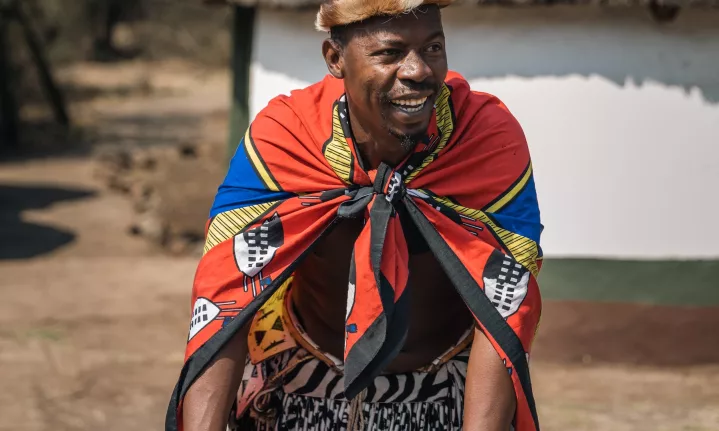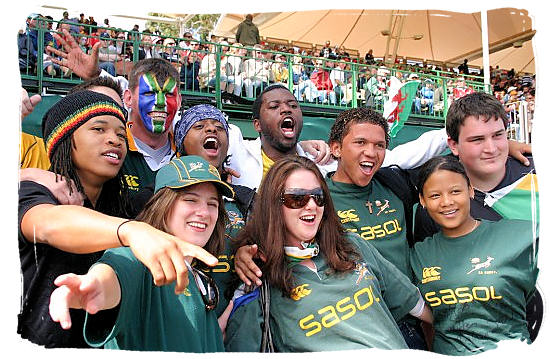The Greatest Guide To South African Culture Today
Table of ContentsWhat Does South African Culture Today Mean?South African Culture Today Things To Know Before You BuyMore About South African Culture TodayTop Guidelines Of South African Culture TodayThe 7-Minute Rule for South African Culture TodaySouth African Culture Today Can Be Fun For Anyone
This adheres to with singing and drum pounding. The groom and bride then consult with the seniors and speak about the relevance of their union. An issue of value in Zambian towns is the passing away of loved ones. All members of the village put cash, effort and time together for the funeral of the deceased.During the grieving period; guys stay outside your house and the women stay inside your home of the deceased. After discussing the deceased, the village strolls to the location of interment to state their last bye-byes. Songs and dance is a really crucial aspect of the Zambian society. The different tribal units have their own dancing types; however, makishi is common among all people.
The Basic Principles Of South African Culture Today
When it concerns songs, drums are made use of one of the most, with a range of drumming events. In Zambia, bulk of individuals are Christian; Protestant and Roman Catholic. There are small groups of Muslims and Hindus, with the remainder complying with neighborhood native tribal ideas.

South African heritage and society is immensely varied, and contains numerous different groups of people who each have their very own customs and ideas. Having such a diversity of people and societies is what makes South Africa so one-of-a-kind. In the true sense of the expression, we are a rainbow nation.
Making it the 7th on the list of countries with the most Portuguese individuals in it outside of Portugal. Portuguese is not just a society, but it is likewise a language and a nationality. Portuguese individuals originate from the nation of Portugal in Europe, however, due to Portugal (like several other countries in Europe) discovering the world and overcoming other nations during the 15th 20th centuries, South Africa has what we call Portuguese South African's living in it.
Not known Details About South African Culture Today
Amongst the famous attributes of the topography is a plateau that covers practically 2 thirds of the facility of the country. The plateau facility rises toward the southeast, where it culminates in the Drakensberg variety, component of a cliff that separates the plateau from the seaside locations. The Drakensburg includes Champagne Castle, the greatest peak in the country.
The region north of the Witwatersrand, called the bushveld, inclines downward from east to west towards the Limpopo River, which creates the worldwide boundary. The western section of the plateau, the middleveld, likewise descends in the direction of the west and differs in altitude between the highveld and bushveld. Between the Drakensburg and the eastern and southern coast, the land descends to the sea.
Nearer the shore there is a low-lying level called the eastern lowveld. Southwest of the plateau the country becomes gradually more dry, paving the way to the stony desert of the Great Karroo, approached the east by the lower, much better sprinkled plateau of the Little Karroo. Dividing the dry southern interior from the sandy littoral of the southern coastline and West Cape is one more variety, the Langeberg.
The smart Trick of South African Culture Today That Nobody is Discussing
The nation's racially, ethnically, and politically split history has actually created national and subnational symbols that still operate as icons of the nation, and others icons that are accepted just by certain teams. The monuments to white settler conquest and political supremacy, such as the Afrikaner Voortrekker ("leader") Monolith in Pretoria and the Rhodes Monolith recognizing the British colonial realm builder and Cape prime preacher Cecil Rhodes, stay sectarian signs.
The first modern-day occupants were the San ("bushman") hunter-gatherers and the Khoi ("Hottentot") individuals, that rounded up animals (South African culture today). The San might have been existing for countless years and left proof of their visibility in hundreds of old cave paints ("rock art"). Bantu-speaking clans that were the forefathers of the Nguni (today's amaZulu, amaXhosa, amaSwazi, and vaTsonga individuals) and Tswana-Sotho language groups (today's Batswana and Southern and Northern Basotho) moved down from east Africa as early as the look at this website fifteenth century

The two former republics of the Orange Free State and Transvaal (South African Republic) were developed by Afrikaner settlers who beat and dispossessed the Basotho and Batswana. Lesotho would certainly have been by force incorporated into the Orange Free State without the extension of British defense in 1869. The best marriage of the country arised from the South African War (18991902) in between the British and the two Afrikaner republics, which decreased the country to spoil at the beginning of index the twentieth century.
Afrikaners historically considered themselves the just real South Africans and, while approving complete citizenship to all residents of European descent, refuted that status to people of shade up until the democratic transition of 1994. British South Africans keep a sense of cultural and social connection to Great Britain without compromising their identification as South Africans.
Some Known Questions About South African Culture Today.
The variety and fragmentation within ethnic groups and the equilibrium of tensions between those groups during the twentieth century prevented interethnic civil dispute. While intergroup stress over sources, privileges, and political prominence remain, those disputes are as most likely to pit Zulu against Zulu as Zulu against Xhosa or African versus Afrikaner.
From colonial India, British merchants and administrators brought the bent steel ornamental roof coverings and slim lace job pillars that still symbolize the outdoor patios of homes in the areas and cities throughout the country. Holy places contribute an important building element also in the tiniest communities. Along with the skyrocketing steeples and classic stonework of Afrikaans Dutch Reformed churches, Anglican churches, synagogues, mosques, and Hindu shrines supply variety to the spiritual architectural scene.

Butchering and the brewing of typical grain beer are necessary in protecting the engagement and goodwill of the forefathers who are considered the guardians of excellent ton of money, success, and well-being. Indian areas maintain their native cooking traditions and apply them on Islamic and Hindu routine and ceremonial occasions. Afrikaners and Coloured people collect at weekends and unique occasions at multifamily barbecues called braais, where neighborhood bonds are reinforced.
Due to the fact that this was the main economic business of both black Africans and white homesteaders, conflict between those groups fixated the property of grazing land and livestock. In 1867, the largest diamond down payments worldwide were uncovered at Kimberley in the west main area. The wide range from those fields helped finance the exploitation of the best gold reef in the globe, which was discovered on the Witwatersrand in 1886.
9 Simple Techniques For South African Culture Today
This brought about misconceptions and official website purposeful misrepresentation in the ventures of white settlers and federal government authorities with African principals during the colonial duration (South African culture today). In the establishment of African books, some facets of public and mainly "tribal depend on" land period were preserved, and even in white country areas, kinds of communal tenure were still practiced in locations with African neighborhoods
After the democratic change of 1994, programs for land restitution, redistribution, and reform were instituted, yet progress has been slow-moving. The white minority still manages eighty percent of the land. In the wake of agricultural land invasions in Zimbabwe, the Department of Land Matters has vowed to speed up land redistribution.